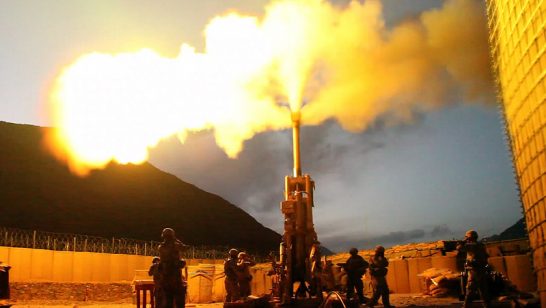
In a recent commentary, ELN Director Sir Adam Thomson argues that a new cold war “may now be hard to escape” and, hence, it is high time states think about what this confrontation is going to look like and how they want it to be shaped.
As timely as the argument certainly is, one important observation seems in order – the current situation in global affairs is profoundly structural and driven largely by the security dilemma. That is, a complex action-reaction confrontational dynamic, which has always proven easy to launch and then extremely difficult to hold back, even when the sides aspire for restraint. Analysing the security dilemma at play in numerous historical and geographical contexts, Robert Jervis famously concluded that “the central theme of international relations is not evil, but tragedy”.
Therefore, it is not enough for any single actor to intellectually design a framework for how they would prefer the cold war to look, it is equally important to ensure at least an implicit buy-in from the rival(s). In other words, any desired outcome will necessitate a degree of cooperation and coordination with the opposing side. Otherwise, the rapidly deteriorating security spiral will keep rendering unilateral intellectual designs irrelevant. Russia’s recent decision to suspend participation in the New START treaty represents a good illustration of this argument.
Metaphor and reality
I am not entirely convinced that the “new cold war” metaphor really reflects the actual dynamics shaping today’s geopolitics. While certain elements of the current West-Russia and US-China confrontations indeed look like the original Cold War realities, others appear very different. If anything, no comparable ideological dimension exists, something which was central to the Cold War. Attempts to frame the present-day confrontations as a struggle between democracies and autocracies (as often proclaimed in the West) or between traditional and postmodern values (as portrayed in Russia) fade in comparison with the universal fight between Communism and Capitalism, two all-encompassing and expansive ideologies.
Attempts to frame the present-day confrontations as a struggle between democracies and autocracies (as often proclaimed in the West) or between traditional and postmodern values (as portrayed in Russia) fade in comparison with the universal fight between Communism and Capitalism, two all-encompassing and expansive ideologies. Yauheni Preiherman
Also, power (im)balances today appear different; China and the US look set to remain the two mightiest actors, yet military and economic power seems more diffused internationally across a significant number of indispensable regional actors. Moreover, as tensions intensify within each confrontational dyad – the West vs. Russia and the US vs. China – they will inevitably become increasingly intertwined, whereby one will occasionally be seen as a proxy theatre for the other and vice versa. If so, it is a classical multi-actor geopolitical competition of the kind that the world has long known, rather than another cold war. Therefore, deploying the cold war concept might, in fact, be more distortive than helpful for understanding the nature of ongoing developments in the international system and ways of minimising security risks.
However, the “new cold war” metaphor seems to be framing the thinking of many decision-makers. Importantly, most of them emphasise the need to avoid another cold war. For example, after his meeting with China’s President Xi Jinping at the G20 summit in Bali, President Biden reiterated that “there need not be a new cold war”. The new US National Security Strategy stresses the same language: Washington “do[es] not seek conflict or a new Cold War”. China’s foreign minister agrees: “we firmly oppose the Cold War mentality”. Moscow, on its part, has long spoken against a new cold war.
Putting aside the broader question of how relevant the Cold War paradigm really is today, such pronouncements by US, Chinese and Russian leaders sound positive. Unfortunately, everything is going exactly in the opposite direction, as tensions keep growing. The reasons for this are more complicated than the other side having supposedly malign intentions.
Security dilemma in the driving seat
Arguments about which side instigated hostile relations, who is to blame and, consequently, who must change course dominate discussions on all sides of the existing and emerging “geopolitical barricades”. These discussions are understandable, because people tend to look for the root causes of any problem. However, the real predicament today is that “who started first” no longer matters if we aim to turn the free-falling escalation into a controlled competition of our preference. Both the West-Russia and US-China confrontations have already entered the stage where decision-makers’ designs and beliefs get overtaken by the security dilemma. The latter drives the escalatory spiral according to its own logic, which is rather mechanical and detached from the specific context of how it all started and who is to blame.
Both the West-Russia and US-China confrontations have already entered the stage where decision-makers’ designs and beliefs get overtaken by the security dilemma. Yauheni Preiherman
The phenomenon of the security dilemma is well documented in the literature, academics and even officials refer to it routinely, yet palpable efforts to tame it have been hard to detect in recent years. In a nutshell, it is an action-reaction confrontational dynamic whereby sides start seeing each other’s moves as inherently malign and attribute nothing but aggressive intentions to them. To prepare for countering anticipated threats, one side doubles down on developing its military capabilities, which only provokes the other side to do the same. At some point – and we have long passed it – the security dilemma becomes all-pervasive and infiltrates perceptions and thinking in areas other than just the military.
Ultimately, it turns into an almost automatic dynamic, which marginalises most other concerns policymakers might hold, as well as their empathy and ability to understand the other side’s specific circumstances. As a result, the very foundations of relations between the antagonists get ruined, which makes even communication between them problematic; essentially, they start living in parallel and highly hostile realities. An unbiased observer won’t need to spend much time in Moscow, Washington or Beijing these days to realise how deeply the security dilemma has conquered the minds and feelings of officials and many common people there.
A Catch-22 problem
Had all of us been asked a decade ago whether we wanted to end up in such a place, we would undoubtedly have answered “no”. Moreover, numerous constructive policy proposals have been put forward since the late 2000s that were meant to help us avoid the most negative developments. And yet here we are…
This only emphasises how the security dilemma lives its own life and simply ignores our unilateral well-meant wishes and intellectual designs, unless they rest on the understanding of the dilemma’s mechanics and include measures to offset it. Key among such measures is sustaining continuous communication, coordination, and cooperation between geopolitical antagonists.
However, this looks like a Catch-22 problem. The current security situation renders cooperation between the West and Russia, and the West and China increasingly difficult – even impossible in many realms – as threat perceptions and attribution bias dominate their interactions; yet we can only realistically hope to be able to control or limit the confrontation if there is at least a minimal level of mutual understanding and coordination between them. Designing preferred frameworks by ourselves or with allies will continue to prove useless as neither side will be able to control the outcome single-handedly. Unilateral frameworks will always lag behind negative developments, as governments tend to work on an issue-by-issue and crisis-by-crisis basis.
The current security situation renders cooperation between the West and Russia, and the West and China increasingly difficult – even impossible in many realms – as threat perceptions and attribution bias dominate their interactions; yet we can only realistically hope to be able to control or limit the confrontation if there is at least a minimal level of mutual understanding and coordination between them. Yauheni Preiherman
Just one example of how the escalatory spiral will keep preventing well-meant unilateral designs from materialising is Russia’s now publicly stated policy of not favouring selective engagement with the West. Unlike during the Cold War, Russian elites tend to believe that such engagement only invites further Western sanctions and non-cooperation on matters of primary importance for Moscow. The recent decision to suspend Russian participation in the New START treaty is an obvious case in point. This is how President Putin explained it: “the United States and NATO are now openly saying that their goal is to inflict a strategic defeat on Russia. And what, after such statements, they are supposed to tour our defence facilities, including the latest ones, as if nothing happened?”
The more intense geopolitical tensions get, the more this logic will manifest itself across the shrinking areas of cooperation, and the more areas of mutual concern (including climate change and trade) will fall victim to this dynamic. Especially given the multiple asymmetries between the West, on the one hand, and Russia and China on the other, as the latter two will increasingly see selective engagement as a Western tool for exploiting and deepening those asymmetries.
Is there a way forward?
This dynamic clearly complicates one of Sir Adam’s suggestions for how the new cold war could be shaped or limited– “protecting areas of international business and even relations with Russia, where it is in the West’s interests to get business done”. Hence, the compartmentalisation approach to managing relations between geopolitical rivals will need to be readdressed and likely substituted with a more holistic approach that includes a whole spectrum of security interests. A fundamental challenge here is that, as a prominent German analyst put it at a closed-door Track-2 meeting, “the West finds it increasingly difficult to differentiate between Russia’s classical security interests and imperialist claims”. Needless to say, Moscow and Beijing make similar arguments in relation to Western policies, which further reflects the security dilemma.
If we really want to shape and limit the confrontations, it is essential that we find mutually acceptable ways of differentiating between legitimate security interests and imperialist claims. This, again, necessitates, a healthy degree of dialogue, cooperation, and coordination.
If we really want to shape and limit the confrontations, it is essential that we find mutually acceptable ways of differentiating between legitimate security interests and imperialist claims. Yauheni Preiherman
Those unwilling to take this path should be honest with themselves as to what the realistic alternative looks like. Given where we are and where we are headed, sooner or later we will inevitably arrive at a major crisis of a global magnitude, with very few, if any at all, guardrails in place. Once that happens, only two scenarios will become possible: either a nuclear Armageddon or a coordinated de-escalation based on a recognition of mutual security interests. So, we should get serious about coordinating designs for a limited confrontation, and making difficult choices to that end now rather than sleepwalking into an apocalyptic confrontation, which cannot have a winner.
The opinions articulated above represent the views of the author and do not necessarily reflect the position of the European Leadership Network or all of its members. The ELN’s aim is to encourage debates that will help develop Europe’s capacity to address the pressing foreign, defence, and security policy challenges of our time.
Image Credit: Wikimedia Commons / Reagan White House Photographs


